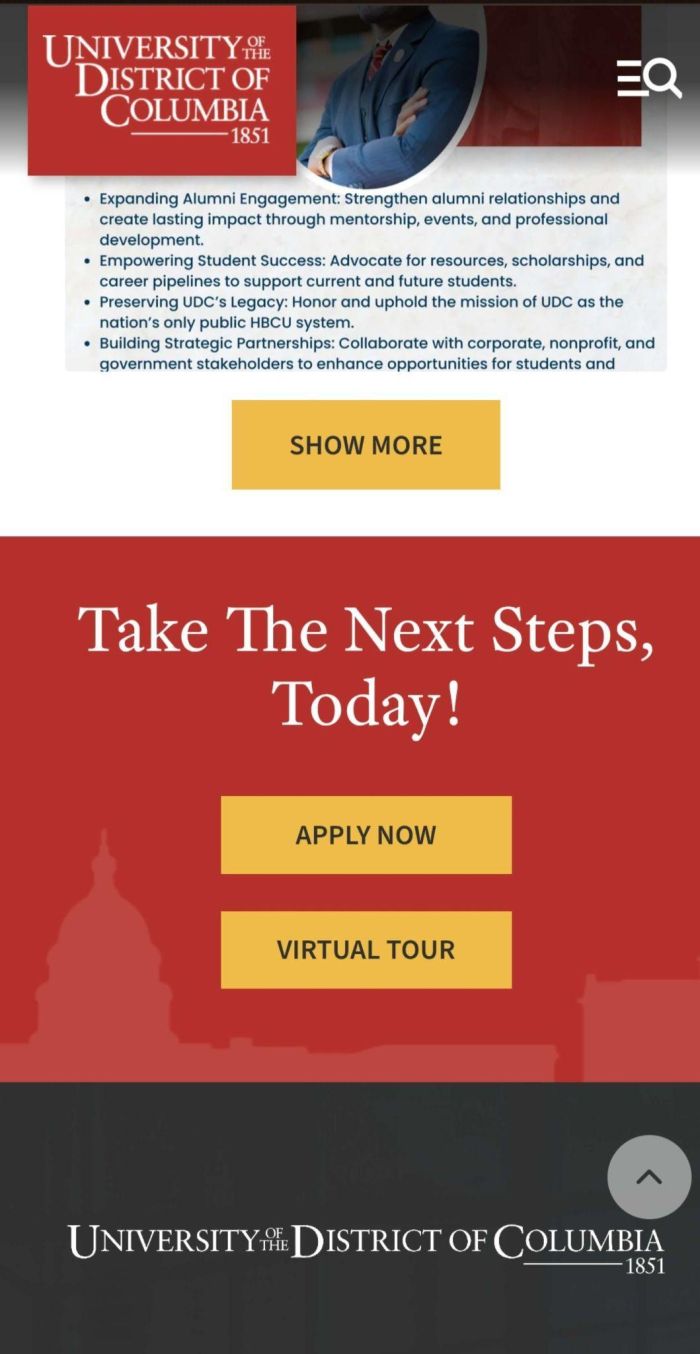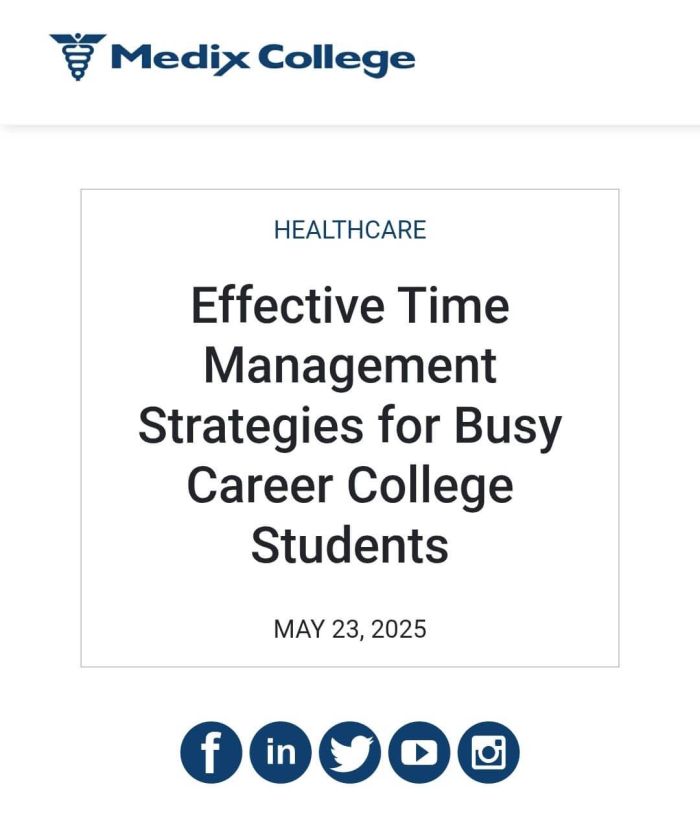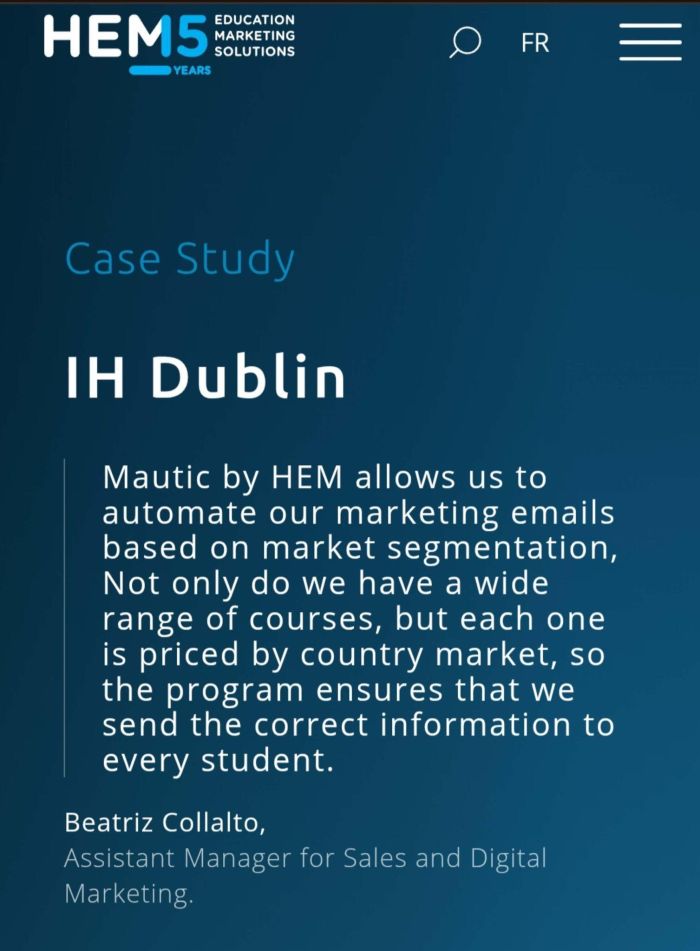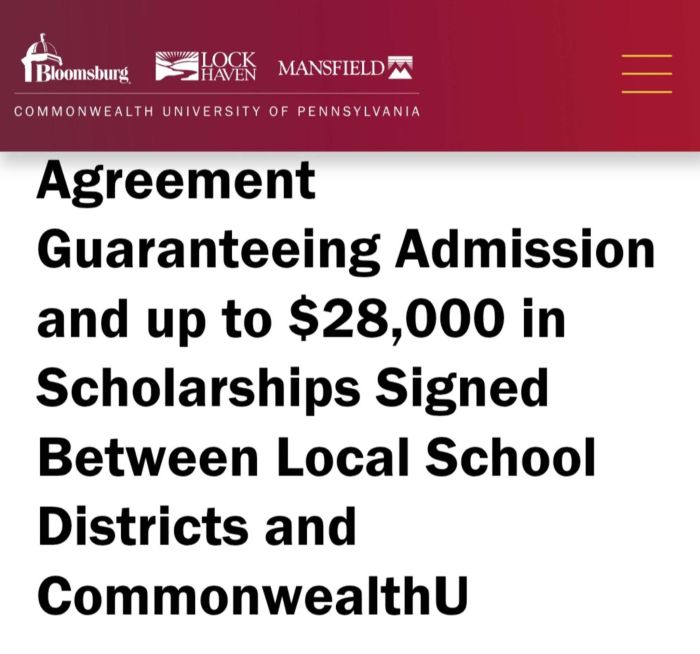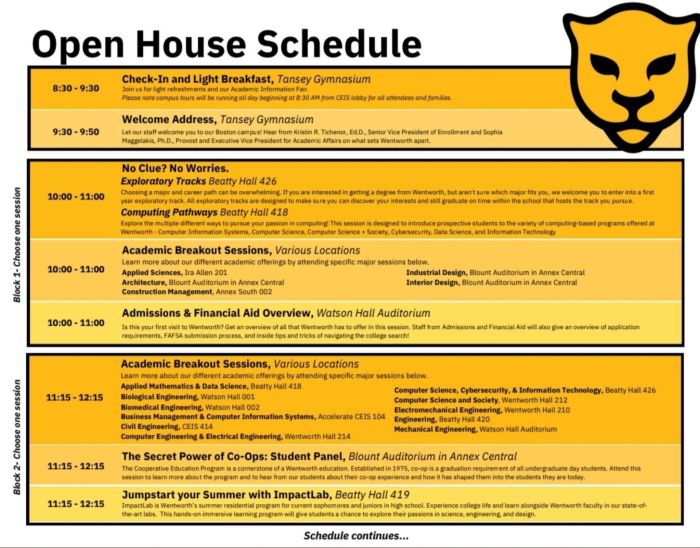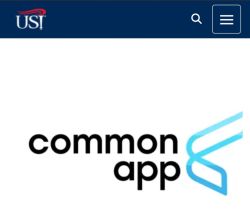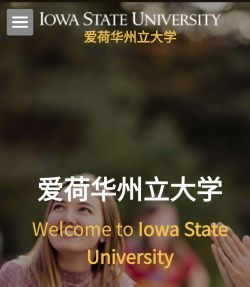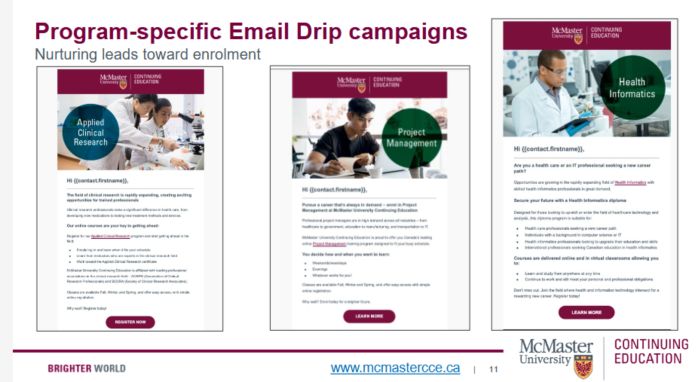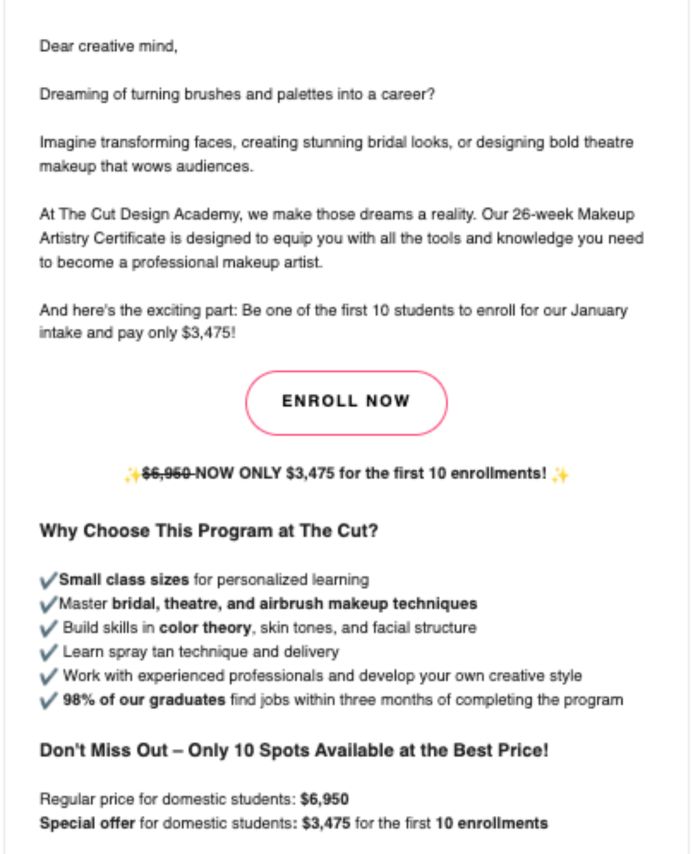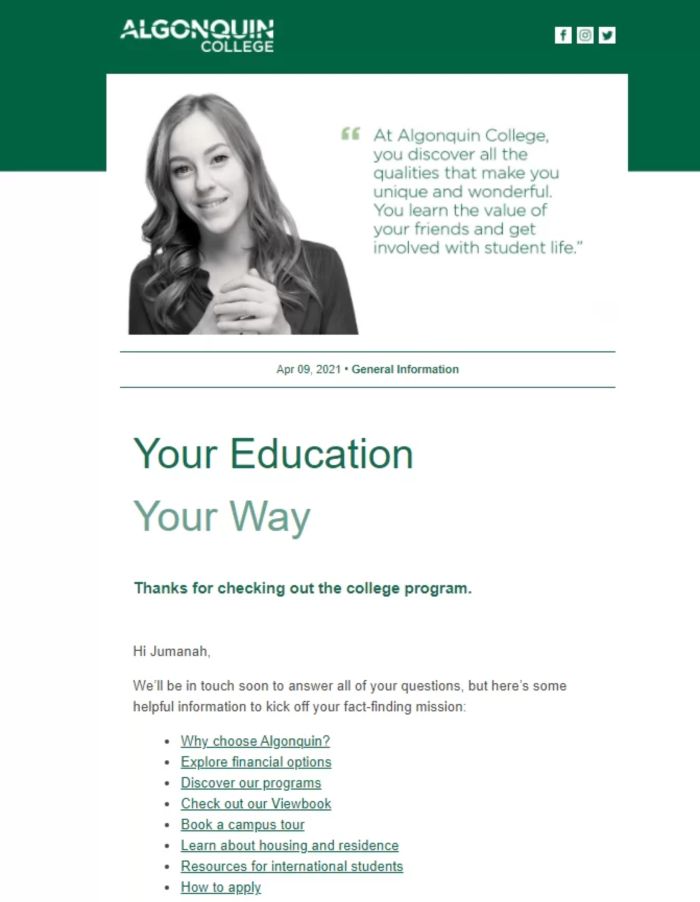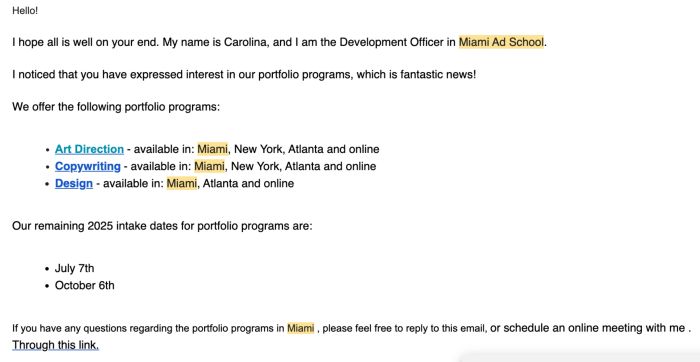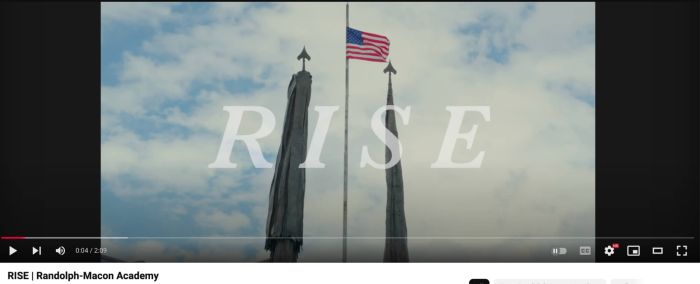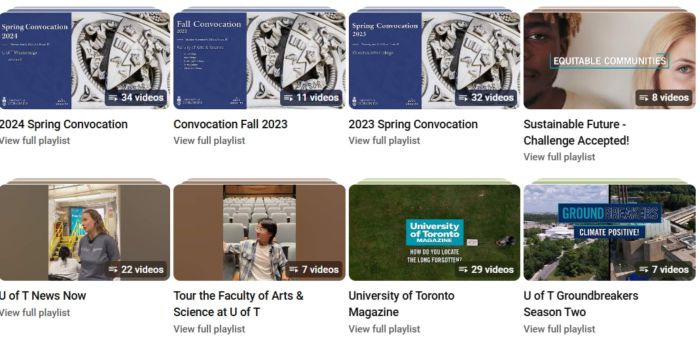Turning inquiries into enrollments is where real growth happens. In today’s competitive education market, generating leads is just the beginning. The bigger challenge? Guiding prospective students through the decision-making journey thoughtfully, strategically, and at scale.
That’s where lead nurturing in education comes in.
Done right, lead nurturing builds trust over time. It moves beyond one-off follow-ups or generic emails, instead delivering timely and relevant touchpoints that support prospects at each stage of their journey. For schools and universities, it’s one of the most powerful levers for boosting application and enrollment rates.
This post breaks down how educational institutions worldwide are evolving their lead nurturing strategies for 2025. We’ll cover actionable techniques like segmenting by intent, building automation that feels personal, and aligning communication with what Gen Alpha expects. Along the way, we’ll share real-life examples to illustrate how schools are implementing this in practice.
Changing Student Expectations in 2025 (Gen Z and Gen Alpha)
Why is fast response time so important in student lead nurturing? Today’s prospective students, spanning late Gen Z and the emerging Generation Alpha, expect immediacy and personalization. These digital natives grew up with instant streaming, smart devices, and AI assistants. When they reach out to schools, they expect the same level of responsiveness. In fact, most prospective students enroll at the first institution that replies. That first-touch speed is no longer a bonus; it’s the baseline.
This shift has raised the bar for student engagement. When a teen submits an inquiry at 8 p.m. or a parent messages on Sunday morning, they want a prompt reply. Waiting days for an email or being stuck in a voicemail loop is a fast track to lost leads. Live chat, chatbots, text messaging, and fast email responses have become expected, not exceptional.
Example: To meet these expectations, the University of Johannesburg implemented MoUJi, an AI-powered chatbot on their website and messaging platforms to provide instant 24/7 answers to prospective student inquiries. This chatbot handles common admissions questions (e.g. application status, program info) and syncs with student records, significantly improving first-response times for Gen Z/Gen Alpha prospects. UJ’s always-on approach has led to faster conversions, as more than half of students now enroll at the first institution to reply, making immediacy the new baseline.
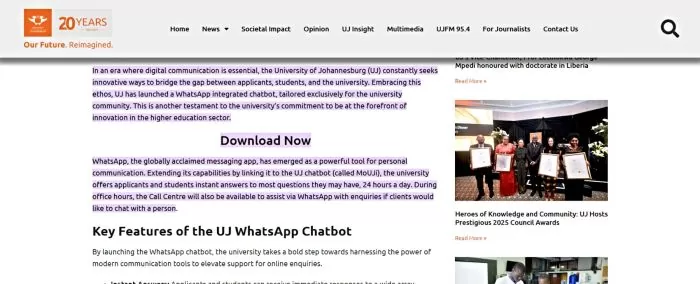

Source: UJ News
Of course, speed alone isn’t enough. Students also expect relevance. A student asking about health sciences should not receive a generic welcome packet. Provide tailored content, whether it’s a program-specific brochure, alumni video, or next steps based on where they are in the enrollment process.
Tone and channel matter too. Younger Gen Alpha students may prefer casual WhatsApp or Instagram DMs. Adult learners might gravitate toward email or phone. The goal is to meet students where they are, with the right message, at the right time.
Actionable insight: Audit your current inquiry process. Are you responding within the first hour? Are you using the same platforms where students made contact? If not, explore adding a chatbot, setting up automated SMS/email alerts, or staggering staff shifts to cover peak hours. In 2025, responsiveness is no longer a luxury; it’s the difference between a lead and a lost opportunity.
Segmenting Leads for Targeted Nurturing
To nurture leads effectively, one size cannot fit all, because not all leads are equal. A key early step is lead segmentation: categorizing and organizing your inquiries into meaningful groups.
How can segmenting leads improve enrollment outcomes for schools? Segmentation helps you focus your energy where it pays off, ensuring each prospective student gets information and attention tailored to their needs. You can segment leads on multiple dimensions: source of the lead, program interest, timeline to enrollment, and engagement behavior. Breaking your giant inquiry list into smaller segments lets you craft follow-up strategies that resonate with each group, rather than blasting generic messages to everyone.
What are useful segmentation categories for schools? Consider these four core dimensions from HEM’s lead nurturing in education framework:
- Source: How did the lead find you (e.g., organic website form, paid ad, education fair)? A student from a high-intent channel, like an agent referral, may need a different approach than someone from a broad awareness campaign.
- Program or Interest Area: What are they interested in studying? Target content accordingly.
- Enrollment Timeline: Are they looking to enroll now or years from now? Your follow-up cadence should reflect that.
- Engagement Behavior: Have they interacted with your emails, attended a webinar, or ignored follow-ups? Hot leads deserve more attention.
By tagging leads across these criteria, you can prioritize and personalize your outreach, automate smarter, and increase conversion efficiency. For example, “Fall 2025 Business Masters prospects from Facebook” who opened three emails might get invited to an alumni panel, while “2026 boarding school parents” could receive nurturing newsletters and event invites over a longer cycle.
Example: International House Dublin, a prominent English-language school, effectively segments its wide-ranging audience, which includes everyone from teenagers to corporate professionals, to ensure personalized lead nurturing. The school uses its CRM and marketing automation to group inquiries by age, course interest, and language level. A 15-year-old exploring summer camps receives youth-oriented content like social media snippets or student testimonials, while a 40-year-old business English prospect might get LinkedIn-style resources or an invite to a professional language webinar. This segmentation strategy ensures tailored, relevant communication for each lead, improving both engagement and conversion.
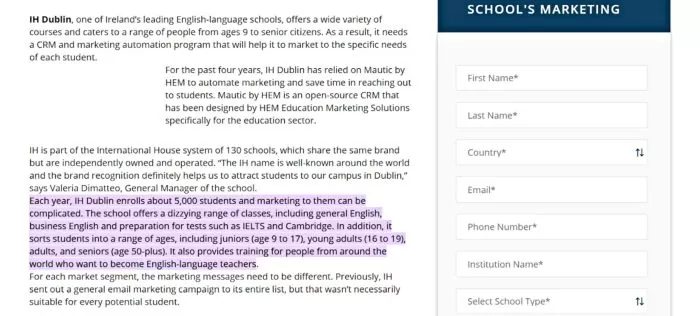

Source: Higher Education Marketing
Actionable Insight: If you’re just starting, begin by tagging leads by program and temperature (“hot,” “warm,” “cold”). Even a simple domestic vs. international distinction helps tailor outreach. Segmentation is the essential first step in treating leads as individuals, not numbers. And in 2025, that personal touch is now expected.
Prioritizing and Scoring Your Leads
Once you’ve segmented your inquiries, the next step is to determine lead quality. Which inquiries are most likely to turn into enrollments? Ideally, your admissions team would personally follow up with every lead. But limited time and resources mean you need to focus on the best opportunities. Lead prioritization and lead scoring allow you to rank leads by their likelihood to enroll, guiding where to devote personalized outreach versus automated nurturing.
Start by identifying signals that suggest high intent. Did the lead schedule a tour? Attend a webinar? Engage with multiple emails? Our HEM webinar series advises schools to “identify each online source that delivers leads, and rank which sources tend to deliver the highest-intent prospects.” Historical data can help here; perhaps students from referral programs convert more often than those from general ads.
Lead scoring formalizes this process. Assign points to meaningful actions and attributes: +10 for a virtual event, +5 for local applicants, +5 for a relevant test score, -5 for vague interest in a distant intake. The result is a numeric ranking that helps you target high-potential leads with fast, personal follow-up while keeping lower-interest leads on longer nurturing paths.
Example: Business School Lausanne (Switzerland) uses a data-driven lead scoring model to prioritize inquiries most likely to enroll. BSL assigns points for behaviors and attributes (e.g., +10 for attending a webinar, +5 if local, -5 if long timeline) and tracks this in their CRM. This scoring helped BSL’s small admissions team focus on quality over quantity. “Each program has its own logic… and season,” notes BSL’s dean, so they leverage data to target high-intent leads by region and timing. By concentrating outreach on top-scoring international prospects, the school not only improved efficiency but also enhanced global diversity in its intakes (since they could devote more time to engaged candidates from various countries rather than chasing every cold lead).
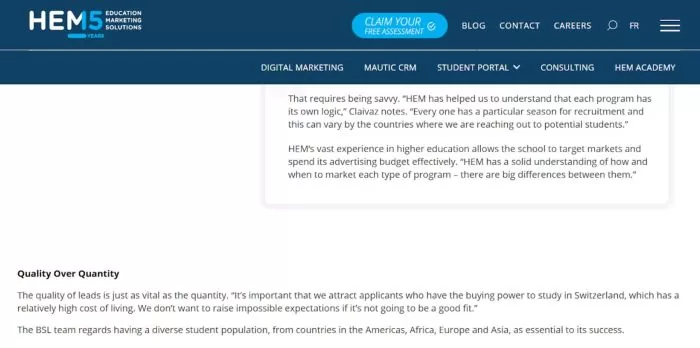

Source: Higher Education Marketing
Actionable Insight: Define a few high-priority criteria for your school and flag those leads. Build tiered workflows, personal outreach for top scorers, automated flows for the rest, and refine your model over time using enrollment results.
Ensuring CRM Hygiene and Integration
A sophisticated CRM is only as effective as the data it holds. Without regular maintenance, even the best platforms can become cluttered, inconsistent, and fragmented, undermining your lead nurturing efforts. CRM hygiene means keeping your database clean, updated, and fully integrated with all your lead capture channels.
First, ensure every lead source flows directly into your CRM. Whether it’s your website inquiry forms, live chat, student fairs, or Facebook messages, all data should be centralized. Avoid manual transfers whenever possible to reduce errors and response delays. Forms, event sign-ups, and chatbots should automatically populate fields and trigger workflows in real time.
Next, standardize how data is entered and tagged. Use predefined categories and consistent naming conventions. If one lead source is labeled “HS Fair” and another “High School Event,” your reporting will be skewed. CRM hygiene also means merging duplicate entries, correcting missing data, and regularly reviewing fields for accuracy.
Compliance is another core aspect. Be sure your CRM tracks communication consent in accordance with regional laws like GDPR, CASL, and CAN-SPAM. Respecting privacy builds trust and protects your institution legally.
Example: Griffith College (Ireland): Undertook a comprehensive CRM cleanup and integration initiative that paid off in enrollment gains. As Ireland’s largest private college, Griffith had amassed a large inquiry database in HubSpot over the years. In 2022, they partnered with consultants to audit this CRM data, merge duplicates, update missing fields, and standardize lead sources. They also integrated all lead capture points – website forms, event sign-ups, Facebook lead ads – so that every prospect flows directly into HubSpot in real time (eliminating error-prone manual imports). After these hygiene improvements and streamlining of workflows, Griffith saw a 20% year-over-year increase in registered learners for Spring 2023. Clean data also enabled better segmentation; “dedicated workflows” now target specific audiences in their market with relevant content automatically.


Source: Higher Education Marketing
Actionable Insight: Schedule monthly data checks and quarterly audits to ensure consistency, eliminate duplicates, and verify integration across all lead sources. Clean data enables smarter, faster, and more personalized outreach.
Automating Lead Nurturing Workflows
With segmented, prioritized, and clean data in place, automation becomes the engine that powers scalable, personalized communication. Lead nurturing in education workflows ensures that no inquiry is overlooked and that each prospective student receives timely, relevant touchpoints guiding them toward enrollment.
What role does automation play in modern lead nurturing strategies? Automation enables schools to nurture large numbers of leads while maintaining personalization. Automated workflows deliver timely touchpoints, such as welcome emails, event reminders, application prompts, and follow-up messages, based on a lead’s actions or profile. With branching logic and program-specific workflows, automation ensures no inquiry is overlooked and frees staff to focus on high-value, high-intent leads.
Workflows are automated sequences of communications and tasks triggered by specific actions or characteristics. For instance, a lead who submits an inquiry form might automatically receive a welcome email, followed by a testimonial video, and later an invitation to apply. Use branching logic that adjusts messaging based on behavior. If a lead clicks a financial aid link, they receive scholarship information. If they remain inactive, they’re routed into a slower, long-term campaign.
This systematized approach enables your team to engage thousands of prospects without manual effort. It also supports tiered nurturing: high-priority leads can trigger alerts for personal outreach, while low-priority leads receive regular updates through drip campaigns.
Automation by program type and lead score further refines communication. Undergraduate prospects might get campus life content and application deadlines, while MBA leads receive career stats and admissions webinars.
Example: Michael Vincent Academy (USA): This Los Angeles beauty academy uses marketing automation to nurture leads at scale. As a small, private school (~350 students/year) without state funding, MVA needed to work “smarter, not harder,” says its CEO. They implemented HEM’s Mautic CRM to automate repetitive recruitment tasks: inquiry form submissions trigger immediate personalized emails, and scheduled drip campaigns send course info and alumni success stories over time. The CRM also tracks each lead’s progress and alerts staff when a high-value prospect engages (so they can personally reach out). The result is that “key elements of the academy’s workflow are now automated, allowing staff to spend more time connecting with prospective students,” rather than manual data entry.
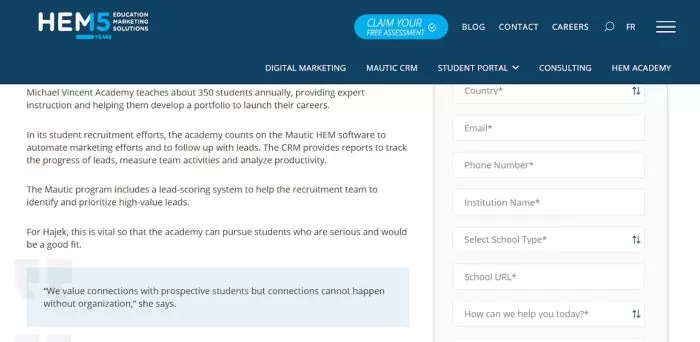

Source: Higher Education Marketing
Actionable Insight: Start with a “welcome series” automation. Then build event follow-ups and dormant lead workflows. Use branching logic to scale personalization and free your team for high-touch moments.
Engaging Leads Across Multiple Channels
In 2025, engaging prospective students effectively means communicating across the full range of channels they use every day. Relying on email alone is no longer enough. Students and their families expect institutions to be present and responsive on email, text, social media, messaging apps, and even video calls. By orchestrating conversations across these platforms, schools can deliver a seamless and personalized lead-nurturing experience.
Email remains foundational for many schools because it’s scalable and direct. But augmenting email with SMS or text messaging can increase visibility and response, particularly for time-sensitive communications like deadline reminders or event invitations. A friendly text from an admissions counselor often prompts a faster reply than an email alone.
Messaging platforms such as WhatsApp, Facebook Messenger, and WeChat are essential for reaching international audiences. Schools that integrate their CRM with these apps can ensure students receive real-time support in their preferred environments. Meanwhile, chatbots and live chat widgets on institutional websites offer 24/7 responsiveness, capturing leads and answering questions immediately, even outside business hours.
Social media content also plays a subtle but powerful role in nurturing. Students often monitor a school’s Instagram or TikTok after inquiring, using it to assess campus life, student experiences, and the overall vibe. Frequent, engaging posts, such as student takeovers, Q&A videos, and highlight reels from events, build trust and connection. Private groups on Facebook or Discord can further nurture admitted students by creating a sense of belonging before they even arrive.
Finally, video calls and phone consultations remain invaluable for more complex or personal conversations, especially with parents or mature learners. Scheduling one-on-one chats after a lead shows interest helps deepen the relationship and guide the student toward enrollment.
Example: Queen Anne’s School exemplifies coordinated multi-channel engagement. They ran dual campaigns that targeted both parents and students: engaging Facebook and Instagram ads were tailored for parents, while vibrant Snapchat ads focused on student interests. This approach ensured the entire decision-making unit received relevant messaging on their preferred platforms. By tailoring content and channel per audience, Queen Anne’s created a connected, multi-touch nurturing experience that contributed to better recruitment outcomes.


Source: Higher Education Marketing
Actionable Insight: Review your communication strategy and expand beyond your primary channel. Add one new platform, whether a texting tool, chatbot, or social campaign, and measure its impact. Prioritize consistency and responsiveness, not volume, and always align messaging with where each prospect is in their decision journey.
Personalizing the Nurture Journey
Today’s students are used to hyper-customized experiences from the apps and services they use daily. If your school sends generic emails or one-size-fits-all messages, you risk losing the attention and trust of prospective students. Personalization helps you build real connections, and it can significantly increase your chances of converting an inquiry into an enrollment.
Start with the basics: use the student’s first name and program of interest in every message. “Hi, Sam, we saw you’re exploring our Biology program…” is far more effective than a bland greeting. Most CRMs and email tools allow this kind of dynamic personalization with ease.
Next, tailor content to fit the student’s interest and where they are in their journey. Someone researching a business degree should receive content about business-related careers, program features, or a student success story from that faculty – not generic school-wide information. Similarly, if a lead has already applied, they should be receiving reminders about next steps, not introductory program brochures.
Behavioral personalization adds another layer. If a student lingers on your financial aid page, follow up with a scholarship guide. If they start but don’t finish an application, trigger a helpful reminder email or call.
Finally, consider personalization at scale through tools like personalized video. A student who receives a message like “Hi, Jordan – congrats on your acceptance to our engineering program!” is more likely to feel recognized and valued.
Example: West Texas A&M delivered an extraordinary level of personalization in admissions by having its president record 3,000 individual welcome videos for newly admitted students. In Spring 2021, President Walter Wendler spent nearly 200 hours personally addressing each admitted student by name, congratulating them, and mentioning their intended major in a short video clip. The videos helped incoming freshmen feel a human connection to the university before ever setting foot on campus. Indeed, WTAMU officials believed this effort would tip the scales for students deciding where to enroll, by showing that WTAMU sees them as individuals, not numbers.
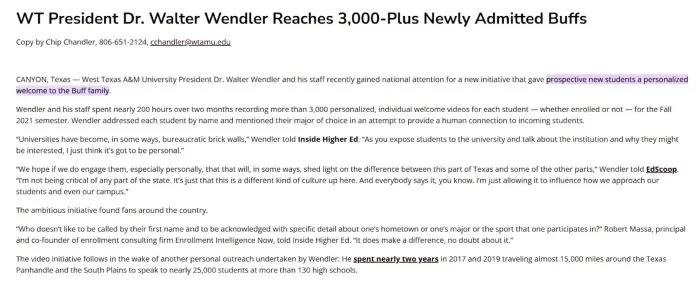

Source: West Texas A&M
Measuring Results and Continuously Improving
Effective lead nurturing starts with emails and running campaigns, but it’s also about tracking what works and refining your strategy over time. Without measurement, you’re flying blind. Schools that succeed in converting inquiries into enrollments are those that monitor their funnel closely: from inquiry to application, admission, and enrollment. Every stage can offer insight if you’re capturing the right data.
At the core, this means using your CRM to track where leads come from, how they interact with your communications, and what ultimately drives them to enroll. Schools should “measure leads and enrolled students by source”. Knowing, for instance, that webinar attendees convert at a higher rate than paid ad clicks allows you to double down on that tactic.
Equally important is monitoring engagement: Are students opening your emails? Clicking links? Attending virtual sessions? These are early signals of effectiveness. If email open rates drop off midway through a sequence, your messaging or timing may need adjustment.
It’s also critical to examine conversion rates between funnel stages. If your inquiry-to-application rate is stuck at 10%, targeted nurturing improvements, like faster replies or more tailored messaging, might lift it to 15%, a meaningful jump.
Actionable Insight: Create a monthly report that tracks each stage of your funnel, including lead source and engagement metrics. Pick one weak spot each quarter, run a small experiment, and measure the impact. Optimization is ongoing, and the key to sustained enrollment growth.
Embracing a Digital-First, Student-Centric Approach
Mastering lead nurturing in education today means more than adopting new tools, it requires a student-first mindset. In 2025, prospective students expect fast responses, personalized communication, and authentic engagement. Schools that align their outreach with these expectations, supported by data and automation, are seeing stronger results across the board.
The institutions highlighted in this article show that consistent, relevant nurturing works. It builds trust, improves yield, and creates better-fit incoming classes.
But nurturing is not just about conversions. It’s about respect. When a student receives helpful, well-timed guidance tailored to their interests, it signals that your school sees them as more than a number. That personal attention can tip the scales when it’s time to choose.
As you refine your student recruitment strategies, ask: Are we showing up where students are? Are we engaging quickly and meaningfully? Are we using our data wisely and ethically? With each improvement, you move closer to a recruitment process that feels less like marketing and more like service.
In short: every inquiry is the start of a journey. With thoughtful, digital-first nurturing, your school can guide more students to a confident, well-informed “yes.”
Frequently Asked Questions
Question: Why is fast response time so important in student lead nurturing?
Answer: Today’s prospective students, spanning late Gen Z and the emerging Generation Alpha, expect immediacy and personalization. These digital natives grew up with instant streaming, smart devices, and AI assistants. When they reach out to schools, they expect the same level of responsiveness.
Question: How can segmenting leads improve enrollment outcomes for schools?
Answer: Segmentation helps you focus your energy where it pays off, ensuring each prospective student gets information and attention tailored to their needs.
Question: What role does automation play in modern lead nurturing strategies?
Answer: Automation enables schools to nurture large numbers of leads while maintaining personalization. Automated workflows deliver timely touchpoints, such as welcome emails, event reminders, application prompts, and follow-up messages, based on a lead’s actions or profile.






